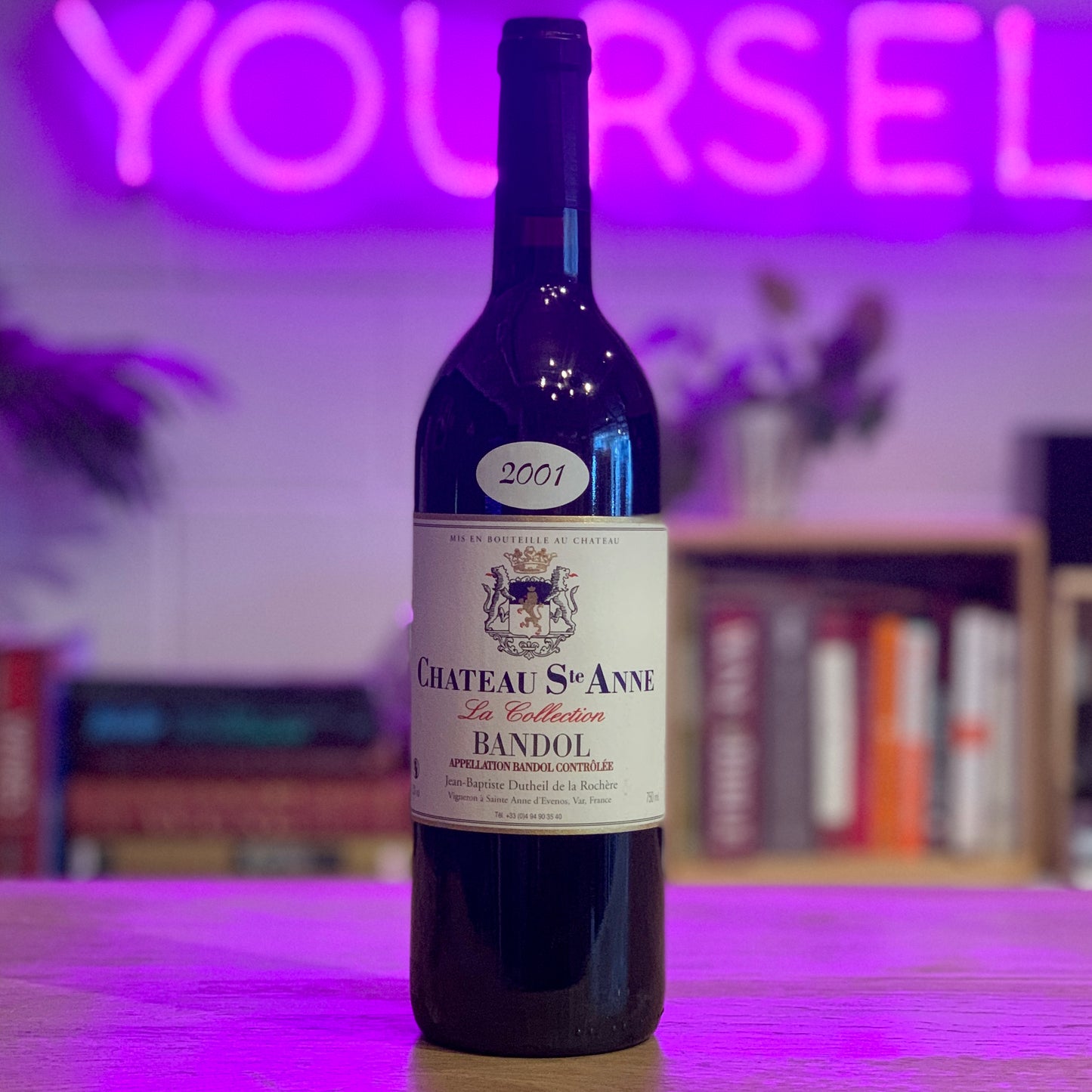This store requires javascript to be enabled for some features to work correctly.
Save 10% on orders of 12+ Bottles of Wine!
Château Sainte Anne 'Cuvée Collection', Bandol, Provence, France 2001
Winemaker: Françoise Dutheil and her son Jean-Baptiste
Farming: Organic
Variety: Mourvèdre (70 year old vines)
Terroir: clay, limestone
Vinification: Hand harvested. Direct press, spontaneous fermentation in stainless steel with indigenous yeasts.
Aging: 18-24 months in foudres. No fining or filtration. Minimal SO2.
From our October 2023 Club notes:
Château Sainte-Anne Cuvée Collection, Bandol, Provence, France 2001
The appellation of Bandol is essentially ancient, having been planted to wine grapes around 500 BCE when the Phocaens landed on these sunny Mediterranean shores. While much of the southern French Riviera is lauded for Grenache, Syrah, and Cinsault, the intensely brooding Mourvedré reigns supreme in Bandol. The chewy, herbal grape that is originally native to Spain produces some of France’s most age-worthy and meaty red wines, best suited for sweater weather after spending many winters in the cellar. Lucky for you, this bottle is pre-aged and ready to party!
Château Sainte-Anne has a history dating back to the 18th century, making it one of the oldest wine estates in the Bandol appellation. Over the years, it has gone through various changes in ownership and management, but it has remained dedicated to producing high-quality Bandol wines. The Domaine is now managed by Françoise Dutheil and her son Jean-Baptiste. In addition to pioneering the Bandol appellation five generations ago, Château Sainte Anne has also been on the forefront of natural winemaking. They have worked closely with famed natural winemakers Thierry Puzelat, Pierre Overnoy, and Gramenon since the 1970s and were one of the founding members of the Association des Vins Naturels (AVN).
The vineyards of this 15-hectare estate are situated on steep, terraced slopes just a few kilometers from the Mediterranean, where the sea breezes create a microclimate that moderates the hot summers and permits a relatively low level of alcohol. The old vines range from 75-85 years old, and are grown in chalky limestone soil with a southeastern exposition. Château Sainte Anne has followed organic, biodynamic and natural agriculture and winemaking since the 1960s. Each variety is manually harvested at full ripeness and then de-stemmed. There is no temperature manipulation here: neither the fruit nor the juice is heated or cooled. (This is possible only because of the cooling effects of the Mediterranean breezes and the naturally cooling effect of ancient cellars dug into limestone caves!) The reds ferment with wild yeasts in stainless steel vats for about 15 days, during which the dense cap of grapes is punched down manually, extracting color and tannin and helping to stabilize the wine naturally. Malolactic fermentation occurs naturally, after which the wine is racked by gravity into old/neutral foudres, where it ages for 20-22 months. There is no fining or filtration, and sulfur is avoided with, at most, 2g/hL being added at bottling.
The Cuvée Collection is a blend of 95% Mourvèdre 95%, 2.5% Grenache and 2.5% Cinsault. When it was young, it was a tannic powerhouse of a wine, a recluse not wanting to be disturbed. But now, with over 20 years of mellowing out, it’s ready to have its night on the town. The chalky tannins of youth have given way to a silky soft texture. The aromas have entered their tertiary stages, giving notes of brandied red cherry, dried orange peel, dried thyme and cigar box. The wine will certainly throw sediment, so it’s recommended that you carefully decant just before ready to enjoy. It can be paired alongside almost any protein, save for very fatty red meats like wagyu (the wine no longer is tannic enough to stand up to the richer cuts). A roasted leg of lamb or a savory cheese souffle over the holidays might be the perfect opportunity to pop this one open! Enjoy this wine now or in the next 1-2 years. — Simi Grewal

